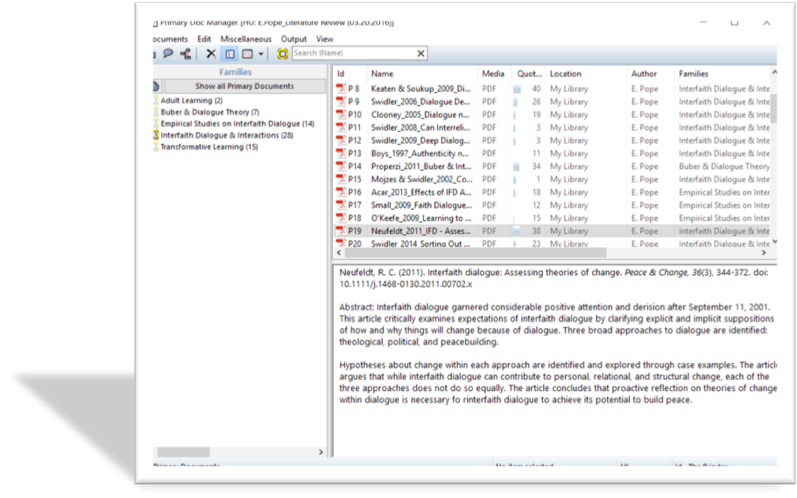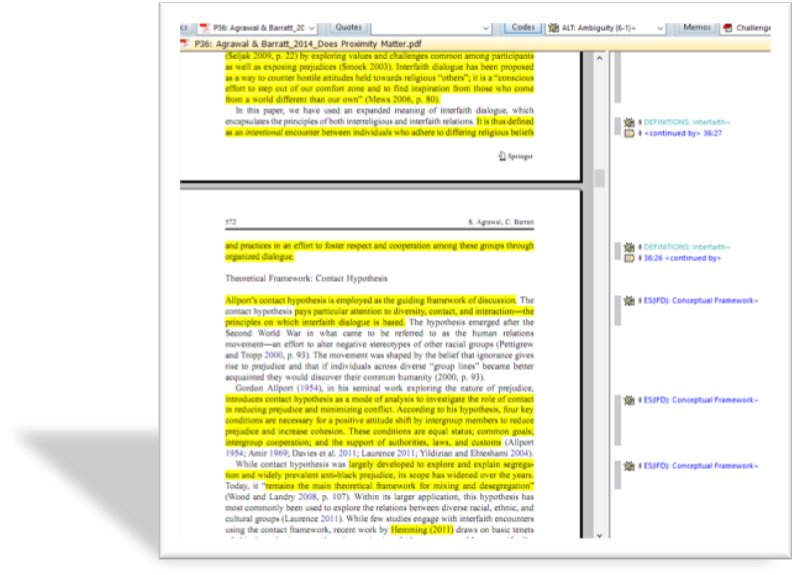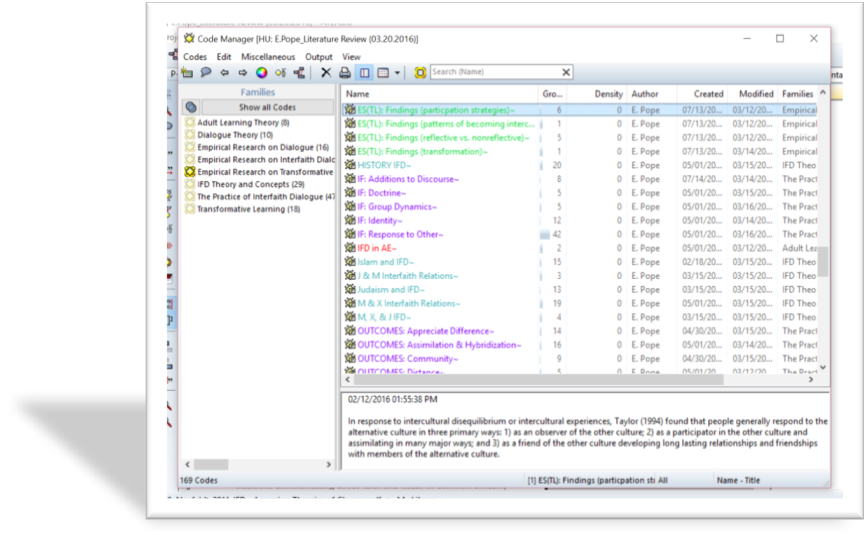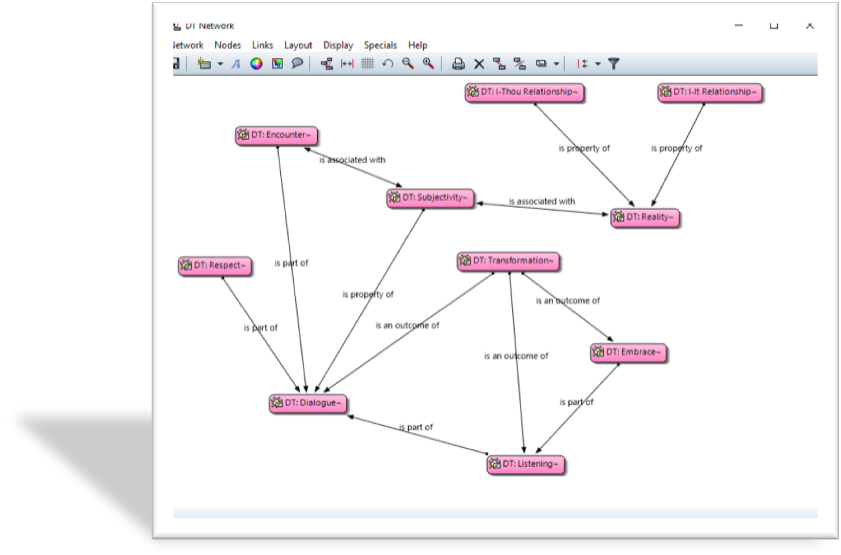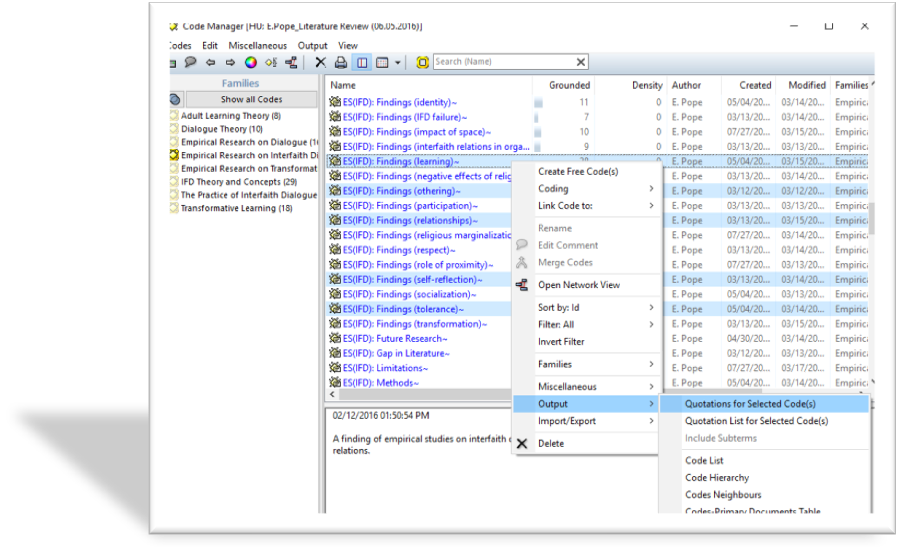My Research and Background
At this point, I would like to take a moment to mention my research interests and educational background as this will provide a clearer picture of my experiences with ATLAS.ti. Currently I am a fourth year doctoral candidate at UGA in the department of Lifelong Education, Administration, and Policy working on a degree in Adult Education and a graduate certificate in Interdisciplinary Qualitative Studies. I have a BA in Religion and graduated with an MA in Religion with a specialization in Islam in 2009. Both of my previous degrees are from UGA. As I worked on my MA I was a Teaching Assistant in the department of Religion teaching introductory religion classes and after graduating I worked as an instructor at UGA and later at Georgia Gwinnett College (GGC).
In 2013 I decided to come back for my Ph.D. in Adult Education and since returning to school have participated in several research projects with professors in the qualitative research department. In the summer of 2016 I earned my certification as a professional trainer in ATLAS.ti and worked as a TA for two qualitative research courses – one on Action Research and another on using digital technologies in qualitative research. My own research interests are focused in transformative learning and interfaith dialogue. Specifically, my dissertation is a qualitative case study working with a grassroots dialogue organization of Jewish, Christian, and Muslim adults who, since 2001, have been participating in interfaith dialogue every four to six weeks. In addition to observations of these dialogue sessions, I am performing interviews with participants, observing steering committee meetings, holding focus groups with facilitators, and examining documents the group produces.
The objective of my literature review was to gather as much conceptual and empirical literature on interfaith dialogue as possible. Interfaith dialogue is a little examined topic in Adult Education and to complete my literature review I examined scholarship in a wide variety of fields such as interfaith studies, adult education, religion, theology, communication studies, and more. Because I learned ATLAS.ti quickly and proficiently, I completed a 95% paperless literature review – everything except for the books I used was an electronic resource. I found that there has been much more conceptual literature published on interfaith dialogue than empirical scholarship. Fortunately, this means that my study dissertation has the potential to contribute in many fields – particularly the field of adult education and in the topic of transformative learning theory.
